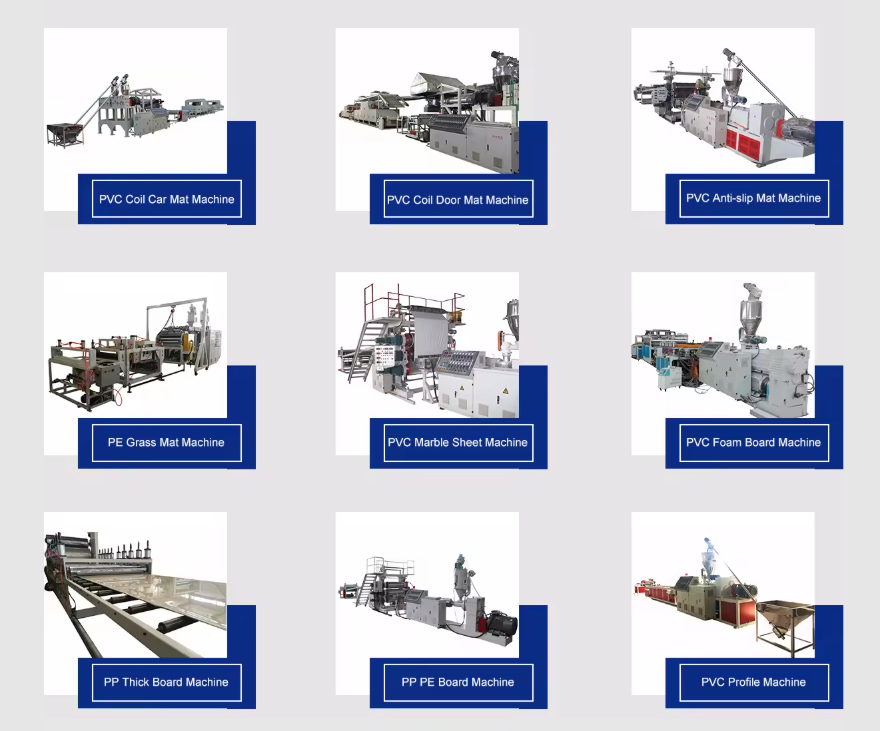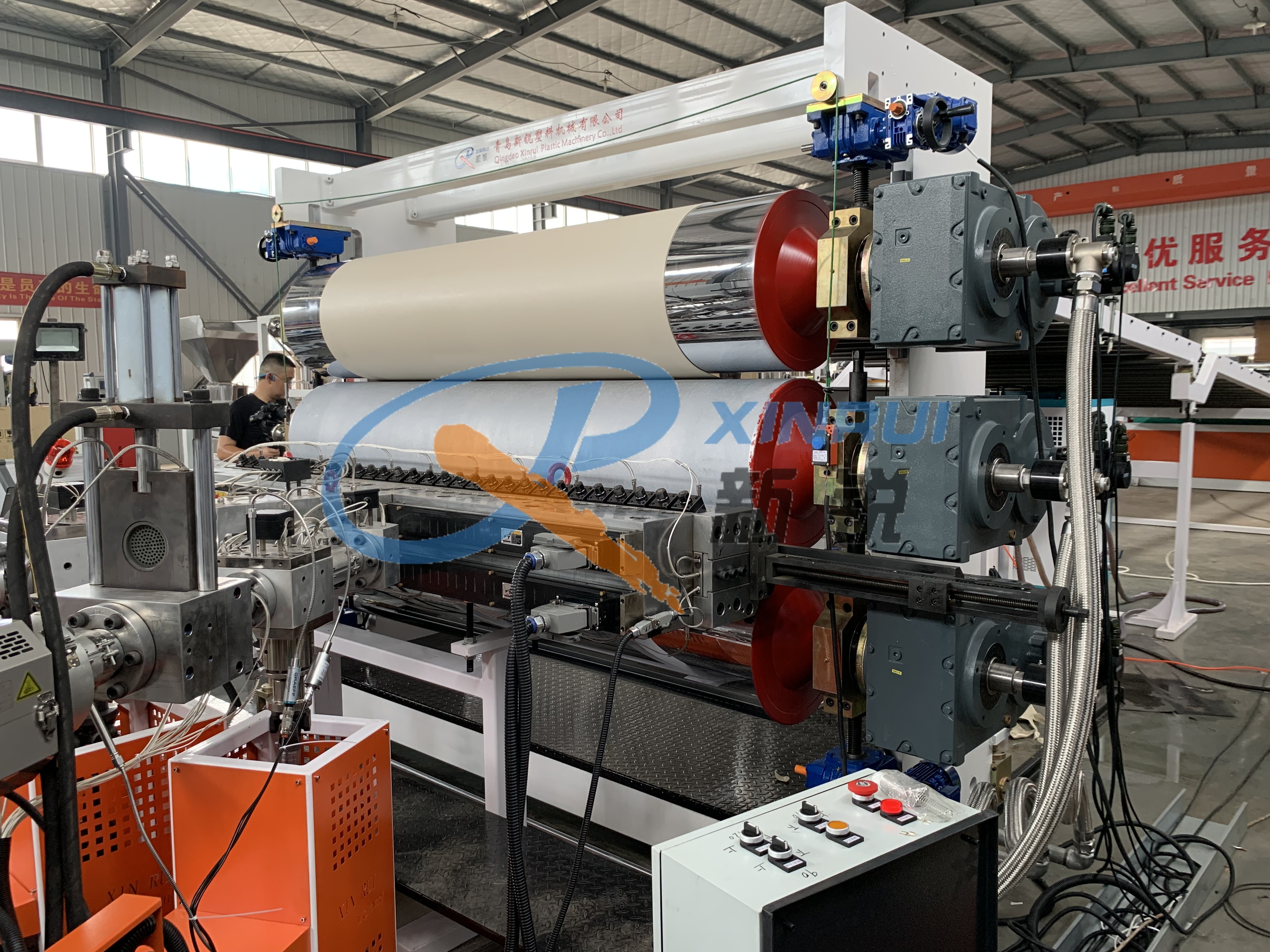Views: 0 Author: Site Editor Publish Time: 2025-06-25 Origin: Site
Plastic extrusion is a key process in modern manufacturing. It’s used across various industries like automotive, construction, and packaging.These machines create continuous plastic profiles in high volumes, making them essential for mass production.In this post, you’ll learn how plastic extrusion machines work, their applications, and how to choose the right one for your needs.

Plastic extrusion machines are used to form raw plastic into continuous shapes. The process begins with heating and melting the plastic material. Once melted, it’s forced through a die to form the desired shape.
The main components of a plastic extrusion machine are:
Hopper: This is where raw plastic, typically in the form of pellets or granules, is loaded into the machine.
Screw & Barrel: The rotating screw inside the barrel pushes the plastic forward, generating heat through friction and mixing the material as it moves.
Die: The die shapes the molten plastic into the desired continuous profile, such as pipes, sheets, or other forms.
Cooling System: After passing through the die, the plastic is cooled, usually with a water bath or cooling rolls, to solidify and hold its shape.
Cutter: Once the plastic has cooled and solidified, it is cut into specific lengths to fit the production needs.

The extrusion process starts by feeding raw plastic into the hopper. The plastic is then moved into the barrel, where heat is applied. The rotating screw inside the barrel mixes and melts the plastic, which is then forced through the die.The die shapes the molten plastic into a continuous form, which could be anything from pipes to profiles. After exiting the die, the shaped plastic passes through a cooling system to solidify. The cooled plastic is then cut into desired lengths.
Key factors in this process include:
Temperature Control: Ensuring the plastic melts evenly is critical to avoid defects in the final product.
Screw Design: The screw must be designed for effective mixing and pushing the molten plastic through the system, ensuring smooth and uniform extrusion.
By carefully controlling these factors, manufacturers can ensure a high-quality and consistent output.
Plastic extrusion machines come in various types, each designed to handle different manufacturing needs. Understanding these types can help you choose the right one based on material properties and production requirements.
Type of Extruder | Description |
Single-Screw Extruders | Simple, cost-effective, ideal for basic tasks like producing pipes and sheets. |
Twin-Screw Extruders | Have two intermeshing screws for better mixing and compounding, ideal for complex materials. |
Parallel double screw extruder | The screws are arranged in parallel, with good mixing and plasticizing effects, suitable for a variety of materials. |
Both single-screw and twin-screw extruders are commonly used in plastic extrusion, but they each serve different purposes:
Single-Screw Extruders are best suited for simpler tasks. They are cost-effective and reliable but may not provide the thorough mixing required for more complex materials.
Twin-Screw Extruders offer more precise control over the mixing process. They’re ideal when you need to blend multiple materials or incorporate additives, providing better performance for specialized materials and more consistent output.
Knowing when to use each type depends on your production needs and material characteristics. Single-screw is great for basic tasks, while twin-screw excels in applications that need better mixing or material processing control.

Plastic extrusion can process a wide variety of materials. Understanding which plastics can be used and how they affect the extrusion process is key to achieving quality results.
Common plastics used in the extrusion process include:
PVC (Polyvinyl Chloride): Often used for pipes, profiles, and flooring. It’s durable and easy to process.
Polyethylene (PE): Common in packaging, films, and bags. It’s flexible and resistant to chemicals.
Polypropylene (PP): Used for automotive parts, medical supplies, and consumer goods. It’s resistant to high temperatures and chemicals.
Polystyrene (PS): Ideal for disposable cutlery, packaging, and toys. It’s rigid and lightweight.
Some special materials require extra care during extrusion:
Recycled Plastics: These materials need proper handling to ensure consistent quality and prevent contamination during the process.
The type of polymer selected significantly affects the extrusion process. Different plastics have unique characteristics that impact:
Temperature Settings: Each material has its own melting point. For example, PVC requires a lower extrusion temperature than polyethylene.
Screw Design: Some materials, like polystyrene, need a smoother screw for better flow, while others, like polypropylene, may require more mixing for uniformity.
Production Efficiency: Some materials flow more easily than others. Polyethylene, for instance, can be processed quickly, while bioplastics may require slower speeds to prevent degradation.
Choosing the right material helps optimize extrusion efficiency, reduce waste, and maintain product quality.
Plastic extrusion machines are versatile tools used in various industries. They can create many different products, offering flexibility and efficiency for manufacturers.
Here are some common products made with plastic extrusion:
Pipes & Tubing: Extrusion is commonly used to create pipes for plumbing, drainage, and irrigation. These pipes can be made from materials like PVC and polyethylene.
Wire Insulation: Extruded plastic is ideal for insulating electrical cables. The process creates a smooth, consistent layer of insulation for wires and other electrical components.
Window & Door Profiles: Continuous profiles for window and door frames are made using extrusion. These profiles are often made from PVC or other durable plastics.
Plastic extrusion offers several advantages, particularly for high-volume production:
Cost-effectiveness: The extrusion process is highly efficient, making it ideal for large-scale production. It helps reduce manufacturing costs.
Ability to Create Complex Shapes: Extruders can make a wide range of shapes, from simple pipes to more complex profiles. This flexibility makes it suitable for many industries.
High Precision and Consistency: Extrusion ensures that each product is manufactured with the same dimensions and quality, making it reliable for mass production.
These advantages make plastic extrusion machines indispensable in various industries, from construction to automotive and beyond.
Q: What is the main purpose of a plastic extrusion machine?
A: The main purpose is to heat and melt plastic materials, then force them through a die to create continuous profiles such as pipes, sheets, and films.
Q: What types of industries use plastic extrusion?
A: Industries such as automotive, construction, packaging, medical, and electrical use plastic extrusion for products like pipes, tubing, window frames, and wire insulation.
Q: How long do plastic extrusion machines last?
A: With proper maintenance, plastic extrusion machines can last 15-20 years, depending on the model and usage.
Q: Can extrusion machines recycle plastic?
A: Yes, extrusion machines can process recycled plastics, turning them into new products, which helps reduce waste and supports sustainability.
Plastic extrusion machines play a crucial role in modern manufacturing, offering versatility and efficiency across industries.When choosing a machine, it’s important to consider your specific production needs.Looking ahead, extrusion technology will continue evolving, driving sustainable manufacturing practices and eco-friendly innovations.